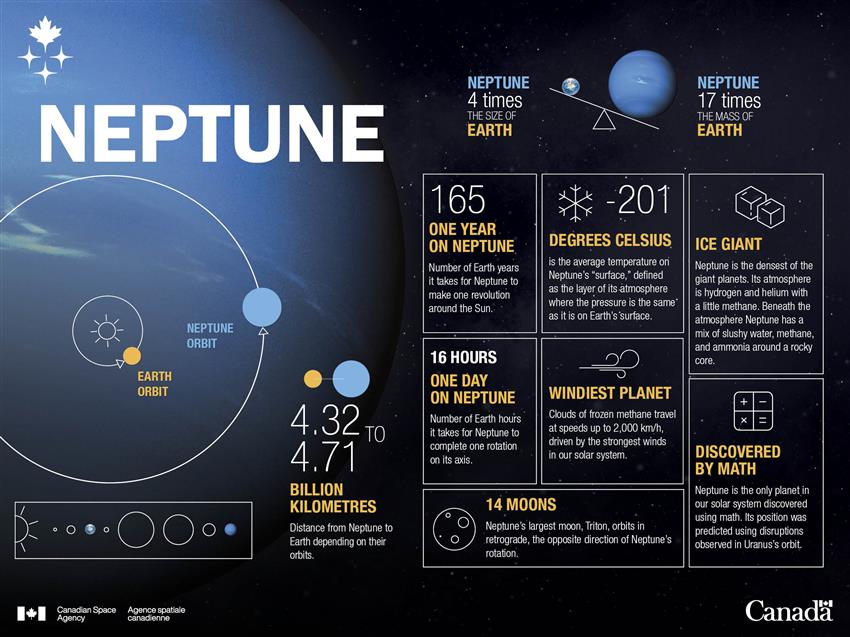Neptune in numbers – Infographic

Description
This infographic features an image of Neptune along with a series of facts that highlight some of the differences between Neptune and Earth. (Credit: Canadian Space Agency)
Text version
This infographic features an image of Neptune along with a series of facts that highlight some of the differences between Neptune and Earth.
- A graphic shows that Neptune and Earth orbit the Sun in the same direction.
- The distance from Earth to Neptune ranges from 4.32 to 4.71 billion kilometres depending on their orbits.
- Neptune is 4 times the size of Earth.
- Neptune is 17 times the mass of Earth.
- It takes Neptune 165 Earth years to make one revolution around the Sun.
- It takes Neptune 16 hours in Earth time to complete one rotation on its axis.
- The average temperature on Neptune's “surface” is -201 degrees Celsius. The surface is defined as the layer of its atmosphere where the pressure is the same as it is on Earth's surface.
- Neptune is an ice giant and densest of the giant planets. Its atmosphere is hydrogen and helium with a little methane. Beneath the atmosphere Neptune has a mix of slushy water, methane and ammonia around a rocky core.
- Neptune is the windiest planet with clouds of frozen methane that travel at speeds up to 2,000 kilometres per hour, which is three times stronger than Jupiter's winds.
- Neptune has 14 moons. The largest moon, Triton, orbits retrograde in the opposite direction of Neptune's rotation.
- Neptune is the only planet in our solar system discovered using math. Its position was predicted using disruptions observed in Uranus's orbit.
File size: 0.37 MB
Image size: 2400 x 1800 pixels
Resolution: 144 dpi
Photo taken on November 25, 2022
Useful link(s)
Copyright / Permission to reproduce
- Date modified: